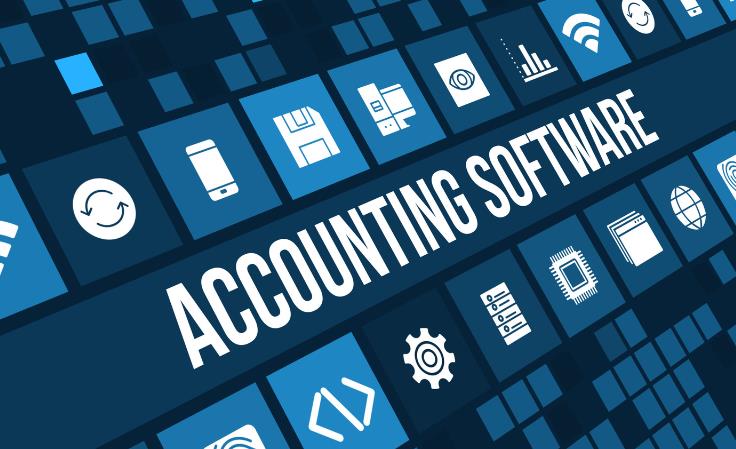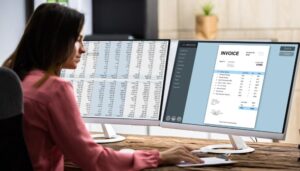
7 Features To Look For In Business Accounting Software
Looking to finally ditch the messy spreadsheets and get organized with accounting software? With so many options out there, it can be overwhelming trying to determine what solution is best for your business. Stop wasting valuable time tracking finances the old-fashioned way!
This article will grab your attention with the key features you need to look for when researching accounting software. You’ll learn what criteria is most important so you can find a solution that meets your unique business requirements.
Get ready to gain interest as we delve into the capabilities today’s accounting software offers, like automated reporting, mobile access, and integration with other apps. By the end, your desire will be peaked to choose software that simplifies managing your books rather than complicating your life. Take action now by checking out the top 7 features to prioritize in your search for small business accounting software.
7 Features To Look For In Business Accounting Software
1. Ease of Use
An accounting software’s user interface can make or break your experience. Opting for an intuitive, easy-to-use system like Freshbooks accounting software will ensure a smoother accounting process without the headaches and hassles. Look for software with simple navigation, data entry, and reporting like the clean, straightforward interface Freshbooks provides. You’ll be able to quickly find what you need without fumbling through complex menus.

Customizable dashboards provide an at-a-glance view of important financial metrics like profit and loss, accounts receivable, and cash flow. Tailor the dashboard to your specific business needs so key numbers are visible in real-time. Freshbooks allows customizing dashboard widgets so you can monitor the KPIs most important to your business.
Drill-down capabilities allow you to click for details from high-level summaries. The right software will make it simple to enter transactions, run reports, and access critical information without complicated steps. You’ll save time and frustration with an accounting solution that prioritizes usability.
2. Mobile Access
In today’s on-the-go business world, mobile capabilities are a must for accounting systems. Look for a software provider that offers full-featured iOS and Android apps. Then you can easily view financial data and complete tasks whether you’re in the office, at home, or traveling.
Robust mobile apps allow you to record expenses the moment they occur by snapping a photo of the receipt. Invoice customers, monitor account balances, and view reporting dashboards from your smartphone or tablet. Seamless syncing ensures the data is updated across mobile and desktop. Mobile access gives flexibility to manage finances anywhere for faster decision-making. Real-time information at your fingertips allows you to take action when it matters most.
3. Automation
Manual processes like data entry, reconciliation, and reporting can drain time that’s better spent on profit-generating tasks. The right accounting software automates routine finance tasks to maximize efficiency.
Look for a system with bank feeds to automatically import bank transactions rather than manually downloading and uploading statements. Rules-based coding can categorize imported transactions for smoother reconciliation.

Other features like automated reminders for late invoices, scheduling recurring invoices, and customizable templates simplify accounts receivable. Opting for an accounting solution with automation eliminates repetitive manual work.
Streamlining processes helps improve accuracy by reducing human data entry errors. Your team saves significant time and gains productivity by letting technology handle the monotonous busy work. Automation is essential for lean, efficient accounting.
4. Reporting & Analytics
Make smarter business decisions with the robust reporting and analytics of today’s accounting systems. Look for built-in standard reports like profit and loss statements, balance sheets, accounts receivable ageing, and sales reports.
Customizable options allow you to tailor reports to your specific needs and preferences. Dashboards highlight key financial and operational metrics for an at-a-glance view of company health.
Advanced features include drill-down capabilities to click on summary figures for underlying details. Compare current periods to past performance or budgets to gain insights. Some systems integrate business intelligence for interactive data visualization and complex queries.
The right reporting and analytics provide visibility into metrics to track growth and profitability. With real-time financial insights at your fingertips, you can identify issues before they become major problems.
5. Integration with Other Software
Business accounting software that integrates with other programmes and platforms allows you to streamline more of your workload into a single, centralized solution. Key integrations to look for include e-commerce platforms like Shopify or WooCommerce to seamlessly connect online sales and banking transactions.

Your accounting software should also integrate with payment gateways, such as PayPal, Stripe, and Square, so you can reconcile payments and automate records of sales transactions and customer invoices. Also valuable is integration with payroll software, allowing for simplified management of payroll taxes and payments in a unified platform.
Finally, make sure your accounting software offers open or public APIs so that custom integrations can be built as needed to connect with niche programmes that manage everything from inventory to subscriptions.
The easier it is to integrate your accounting software with adjacent systems for sales, payroll, payments, etc., the higher the value you will derive in time and efficiency.
6. Strong Customer Support
With any complex business software, issues inevitably arise that require customer service to help troubleshoot and provide expertise. Especially during initial setup and implementation, questions will come up that call for quick responses from knowledgeable support staff.
A few key aspects to look for include 24/7 phone and live chat assistance so that personnel familiar with the software features and common problems can readily assist whenever needed. It’s also important to have access to an online knowledge base with help documentation, training resources like webinars, and a community forum to leverage insights from fellow customers.
While freemium accounting software seems appealing from a pricing perspective, the level of customer support is often severely lacking compared to paid options. Having access to superior assistance and expert guidance can be well worth the subscription cost, supporting a quicker learning curve and maximizing the utilization of the platform’s full capabilities.
Be sure to assess how responsive and helpful the customer service options have been for current users by looking at online reviews and testimonials that provide transparent feedback on this dimension.
Quality customer support should be viewed as a worthwhile investment for ensuring a positive onboarding experience and gaining proficiency with your accounting software’s extensive tools.
7. Multi-user Access
If your business employs a dedicated accountant or financial team, it is crucial that your accounting software supports multi-user access with permissions controls. This allows for work collaboration within the platform while restricting access as needed to protect sensitive data.
The highest-tier accounting platforms offer unlimited user licenses with customizable roles and permissions. For example, a bookkeeper can be set up with access limited to accounts payable and accounts receivable workflows. More senior accounting team members like a Controller or CFO could have elevated permissions that also allow modifying chart of accounts structure or exporting financial reports.

And an outside accounting firm doing financial statement audits or tax preparation can be included as a user with read-only permissions during review periods. Having a range of access levels for the appropriate team members streamlines collaboration, provides ownership for completing tasks like monthly close checklists, and maintains the security of confidential data like payroll records.
Just be aware that more basic accounting packages designed for startups and very small businesses may impose hard ceilings on how many active user seats are allowed, which can hamper flexibility. While maybe not essential in the very early stages, anticipated company growth means sooner or later multi-user functionality with strong controls will be imperative.
Key Takeaways: 7 Features To Look For In A Business Accounting Software
Selecting the right accounting software is a key business decision that can make or break your financial workflows. This article outlined the most critical features to look for including ease of use, robust reporting, automation, and security.
With so many options on the market, take the time to properly evaluate your specific needs. Determine what will provide the most return on investment in driving efficiency, compliance, and insightful reporting.
Now that you’re armed with the top 7 features to prioritize, it’s time to dive in and request demos from top-rated accounting systems. Narrow down your choices to the software that best aligns with your business requirements and budget.
Take control of your finances with a solution that simplifies processes rather than complicating your life. Don’t let the limitations of spreadsheets hold your business back any longer. Invest in accounting software that gives you the visibility and control to make smarter decisions.
Author Profile

- Blogger by Passion | Contributor to many Business and Marketing Blogs in the United Kingdom | Fascinated with SEO and digital marketing and latest tech innovations |
Latest entries
 Digital MarketingApril 11, 2025Digital Marketing Tactics That Generated £1M in Revenue for UK Retailers
Digital MarketingApril 11, 2025Digital Marketing Tactics That Generated £1M in Revenue for UK Retailers Web DesignApril 11, 2025UK Digital Trends: Top Website Building Solutions for 2025
Web DesignApril 11, 2025UK Digital Trends: Top Website Building Solutions for 2025 TechnologyMarch 31, 2025The Future of Text-to-Speech: Transforming Communication in Healthcare
TechnologyMarch 31, 2025The Future of Text-to-Speech: Transforming Communication in Healthcare TechnologyMarch 28, 2025Top-Rated Tools Every Modern Recruiter Needs in Their Toolkit
TechnologyMarch 28, 2025Top-Rated Tools Every Modern Recruiter Needs in Their Toolkit

